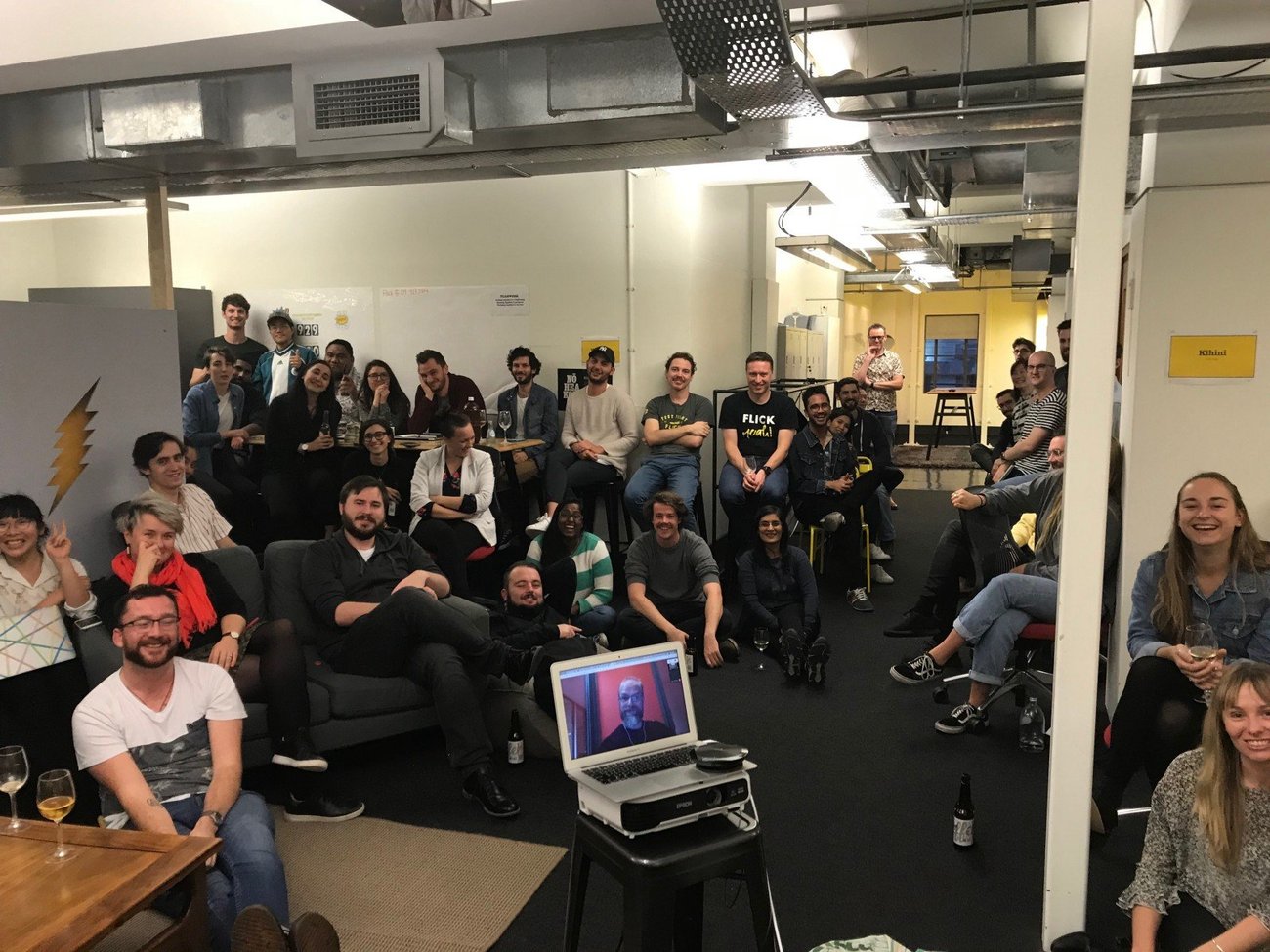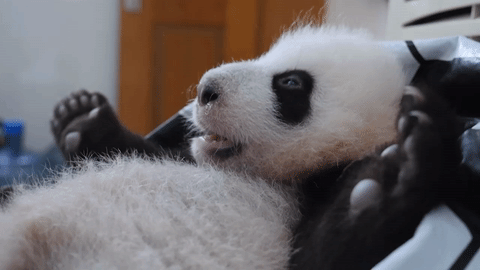
In the past six months, there has been an enormous amount of growth in the engineering team here at Flick Electric. Eleven new developers have started?—?the development team was five in October and is currently fourteen. We are essentially a completely different team. This in itself is a challenge, let alone the process we took to get to that size.
Whispers of ‘we need to hire quickly’ immediately make my ears prick up, as often diversity is thrown out of the window in favour of growth. There seems to be a persistent, unverified idea in a lot of organisations that both hiring quickly and hiring diversely can’t be done at the same time. Often this means that organisations aren’t trying hard enough, or aren’t aware enough of their biases to understand how to overcome them. Hiring diversely is hard, especially if you’re an organisation that has a lack of it. It might start with an uncomfortable look inward to address the issues that have led to this position. It takes a lot of humility, education and listening to diverse opinions to combat the norms of the dominant group.
In my career as a software engineer there have been many times that I have been the sole woman, or the sole non-white person in the room. As I’ve gotten more experience, I’ve had the privilege of being able to be a lot pickier about the places I work for. If an organisation doesn’t have a single woman in their development team, or in a leadership position, then it’s a no from me. Most organisations I’ve spoken to understand that diversity in important, and that it’s something that they should be doing. But so many organisations find it hard to move from this acknowledgement to a tangible improvement in the diversity of their workplaces.
Flick has been by far the most diverse place that I’ve worked in?—?something that’s helped by the fact that we are a large company of 80, have teams that cover different business domains, and was started with (and maintained) a commitment to diversity. Diversity is not tokenism, and isn’t achieved by having just one woman, or one non white person. For there truly to be diversity, it needs to be there in its most banal form. Diversity is a population made up of such brilliant variance that to speak of a single difference is like comparing Pacific Rose apples to Eve apples, rather than apples and oranges.
I had only been at Flick for a few weeks before I put my hand up to help with hiring, as did my colleague Greg. We had a handover meeting with Michael and Raquel who were previously leading hiring, and the next day we started screening CVs, arranging interviews and conducting them. Throughout the process we encountered a lot of the stumbling blocks that a lot of organisations face when trying to hire diversely. Let’s have a look at a few of them and how they can be overcome.

Myth 1: We want to hire diversely, but we needed to grow ? ? ?
I’ve seen a lot of start ups grow initially in a particular way. They hire people that they know. There are no public job listings. The first hires will be friends, previous coworkers, relations, friends of friends. In the uncertain and delicate incubation stages of building a business, there are a lot of benefits to this method. You hire people that you already trust, people you already have rapport with. You can move quite quickly. You don’t have to bother interviewing them when you already understand their working style and what value they will bring to the organisation. You don’t have to bother checking their references when you are their reference. And they’re better set up for success as well?—?there’s more trust for someone who’s been vouched for.
People tend to be friends with people who are like them. It often feels good to be in a team like this. The group works quite cohesively. Everything seems to work seamlessly because everyone has come from a similar background. You all communicate in the same way, have similar hobbies and interests. You all knock off on Friday and go to the same pub because everyone likes the same type of beer.
Hiring this way is an inherently biased system. It quickly builds a strong monoculture. It works well for people with a lot of social equity. People who already benefit from the biased structures of education, law, government and wealth are the ones who are most likely to have these strong interpersonal connections. Significant numbers of people are excluded?—?namely people newer to the tech industry, people newer to the place where the organisation is based. A lot of these people tend to be underrepresented groups in tech.

At Flick we’re just as guilty of this behaviour. The first nine members of the tech team were hired in this exact fashion?—?including myself. But here’s the catch: if you start with a diverse team, you’re more likely to keep this diversity as you grow organically. Word-of-mouth hiring at Flick didn’t result in a pale and male team, simply because it didn’t start with one. Once there was a need to grow the team at a quicker pace, a formalised and consistent hiring process was put in place.
It is crucial to start thinking about diversity early. It is much easier to do a bit of this groundwork at the start, rather than address cultural issues once they have become entrenched in an organisation and rendered invisible. All this accumulated cultural debt is much harder to refactor than technical debt.
Myth 2: We wanted to hire diversely, but no one applied ?? ? ?
Hiring diversely is hard. I was shocked by how homogenous the bulk of the applications we received for our intermediate/senior developer role, even though we were doing all the right things?—?we’d taken care in writing our job ad, our current team was fairly diverse, we had a reputation as an inclusive employer, we were flexible with hours and location, we were prepared to train people who didn’t have a background in Ruby, we have diversity in leadership positions, we were well connected with the Ruby community in Wellington.
It felt like we were already doing a lot, but it still wasn’t reflected in the incoming applicants. Part of the issue is that in reality, the pool of experienced developers in Wellington isn’t huge, and they are often highly sought after.
So we decided that we needed to double down and try harder. We widened the scope of experience that we were hiring for, and placed an ad through Summer of Tech for junior developers. We introduced a referral scheme where anyone (not just Flicksters in the tech team) could get a bonus for successfully referring a friend to a tech team role. We even discussed using *gasp* recruiters. And we waited?—?we hired an incredible number of people in a short time period, but we were also clear about maintaining a high standard.

Opening up our hiring scope to juniors was by the far the most effective action for diversity. It’s unfortunate but diversity sharply drops off with experience. Aside from that, there are so many reasons to hire juniors, and it’s been great to see their contribution to the team.
Organisations often pay a lot of lip service to diversity. It’s easy to give some money and slap your company logo on a women of tech event. It’s easy to say “we’re aware that our industry has challenges with diversity” at a networking event. But talking about diversity doesn’t actually translate into a more diverse team?—?there needs to be actionable change, and proactive efforts. Whatever you’re doing now, there’s always more things you can try.
Myth 3: We want to hire diversely, but it wouldn’t be fair unless we hired the best person for the job ????? ?
Through the hiring process at Flick, applicants generally meet at least three different members of the tech team. The initial interview is with two developers on the tech team, generally one woman and one man. The technical interview is then held with another team member. None of the interviewers have to be senior developers, in fact sometimes in the technical interview we deliberately paired up a less experienced developer with the applicant to assess the applicant’s mentoring and communication skills. We trust our people, and appreciate the range of opinions yields us. There has never been a time where we felt like the person we hired wasn’t the best person for the job.
Being a developer involves more than writing code, and quality of work is shown in more than dense green squares on a GitHub profile. We believe that where someone currently is in their career has nothing to do with where they could be if given the right support to succeed. We look for people who are passionate about the craft, and about sharing that enthusiasm and knowledge with other team members.

At Flick the development team works closely with other parts of the business, as well as each other, so our developers need skills to communicate with people who don’t speak the same technical vernacular. We try to distribute responsibilities such as hiring, organising team culture events and other leadership activities. Developers are given room to grow a variety of skills at Flick.
There are many cultures, genders, ages and personal beliefs represented in our workplace, so the ability to forge a working relationship with someone who has a different background to you is a prerequisite to designing the next awesome product for our customers.
Everyone has a different definition of what ‘best’ means. I think that by coming to a collective definition, capturing a diverse range of viewpoints, we ended up hiring people who are more likely to succeed in our environment, and contribute something special to the team, be that in the technical, mentoring or leadership domain.
What we learned
We learned a lot about ourselves, and what our biases were as a group. We tended to favour people who had previously been in a start up environment before. Our team skewed young, with the mean age being around 28, and the majority childless.
“Fit” is an essential part of hiring, and this doesn’t mean looking for someone you’d go for a beer with. It means an honest assessment of where the team is and how new applicants can challenge us to grow in the right direction. We hired our first remote employee to help us improve our support and processes for working offsite. This subsequently drove a dramatic increase in our documentation. We endeavoured to be transparent and truthful when describing what the role was like day to day, and strived for agreements that worked around their family, study and lifestyle commitments.
That being said, it can be hard to work out what individual people want and need in an hour interview. We’ve had people turn us down because they thought we were “too unstable and start-uppy” and others turn us down because they thought we were “too stable and not start-uppy enough”. The office is a busy, vibrant and energetic place, and on any given day there will at least one dog and one child roaming about the floor?—?an aspect that is terrific for some but not all.

Our process for hiring juniors was also new, and there were a few things we didn’t get right the first time round. After our first candidate went through the technical assessment, we realised we made it too hard, but couldn’t modify it at that time as it would have disadvantaged the first candidate.
I don’t think we did a perfect job, if we consider gender diversity for example, it skews much more towards men in the senior roles. I’m currently the only senior woman?—?but that just means we need to focus more on training everyone else. Whereas with cultural diversity, it’s much more balanced. There are a lot of different ways to measure diversity, and on the balance I think we’ve done okay juggling them all.
All in all, I think we’re all happy with all the talented new developers we’ve brought on board. These next few months we’ll concentrate on on-boarding and up-skilling the team, and having time together to develop a collective culture.
It’s been quite a big task to undertake, and I’m glad that we were capable of doing it while maintaining the technical skills, collaboration skills, affability and diversity of the tech team.
- Rose Lu has been working as a software developer since 2011. She currently works part time at Flick Electric and is completing her MA in Creative Writing at the International Institute of Modern Letters. Find her on Twitter at @plainricedinner.




